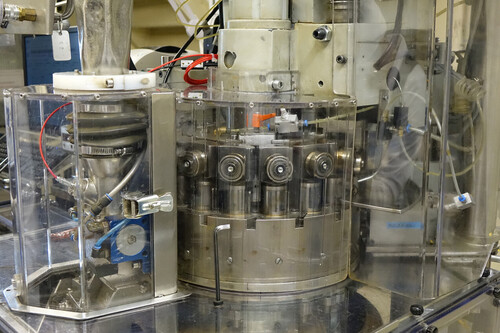Since the latest episode of the Israel-Iran conflict began on June 13, uranium centrifuges have drawn global attention. The government led by Benjamin Netanyahu has made dismantling Iran’s nuclear program a top priority, presumably to prevent the development of the technology needed to manufacture atomic bombs. To achieve this, Israel and the U.S. have bombed facilities where Iran was allegedly enriching uranium, including the Fordow, Isfahan, and Natanz plants.
According to Israel and the U.S., these Iranian nuclear facilities held several hundred, possibly thousands, of uranium centrifuges. These machines play a crucial role in Iran’s nuclear efforts—and in any nuclear program aimed at weapons—by enriching uranium to 90%. At that level, it can be used to build fission bombs or thermonuclear devices that combine fission and fusion. In the latter, uranium is used only in the fission stage, serving as a detonator for atomic fusion. That fusion involves two hydrogen isotopes: deuterium and tritium.
Uranium-235 Is the Real Protagonist of this Story
To understand the role of uranium centrifuges, it’s important to examine two isotopes of this heavy, radioactive metal. Uranium occurs naturally in low concentrations, typically found in rocks, soil, and water. Extracting it is expensive and challenging because it requires chemical processes to isolate it from other elements and impurities.
Uranium has 92 protons and 92 orbiting electrons. Its nucleus contains between 142 and 146 neutrons, depending on the isotope. While an atom’s nucleus usually contains a specific number of protons and neutrons, that’s not always the case. For example, protium—the most common hydrogen isotope—has just one proton and no neutrons. Isotopes share the same number of protons and electrons but differ in their number of neutrons.
Uranium-235 serves as fuel in nuclear reactors and weapons.
Uranium-235 serves as fuel in nuclear reactors and weapons. When its nucleus absorbs a neutron in a process called induced fission, it becomes uranium-236, a highly unstable isotope. Uranium-236 splits into two nuclei—barium-144 and krypton-89—and releases two or three neutrons.
Here comes the interesting part: The total mass of barium-144 and krypton-89 is slightly less than that of the uranium-236 nucleus. Roughly 0.1% of the original mass “disappears.” Where does it go? It transforms into energy, as described by the famous equation E = mc², which relates mass to energy.
Proposed by Albert Einstein in 1905, this formula shows that even a tiny amount of mass can produce a large amount of energy, since c, the speed of light in a vacuum, is roughly 299,792,458 meters per second—and the formula squares that number.
This equivalence means even a small portion of an atomic nucleus holds a massive amount of energy, even at rest. When in motion, an object’s total energy exceeds its rest energy, introducing us to relativistic physics. In both fission and fusion, the energy comes from the force that holds atomic nuclei together: the strong nuclear interaction.
Understanding how mass converts into energy helps explain how an atom can release so much power. The nuclear fission process continues when emitted neutrons hit other fissile nuclei, creating a chain reaction. Not all emitted neutrons trigger further fission, but only one needs to do so for the reaction to continue. This is the principle behind controlled reactions in nuclear power plants.
Centrifuges Increase the Concentration of Uranium-235
Uranium-238, the most common isotope in nature, makes up 99.3% of natural uranium. However, it’s not fissile. Enrichment aims to raise the proportion of uranium-235, which only accounts for 0.7% of natural uranium. Nuclear reactors typically require fuel enriched to 3-5%.
Centrifuges feature a cylindrical rotor made from carbon fiber or titanium alloy, spinning at 50,000 to 70,000 revolutions per minute.
Centrifuges feature a cylindrical rotor made from carbon fiber or titanium alloy, spinning at 50,000 to 70,000 revolutions per minute. Because uranium-238 has more neutrons than uranium-235, it’s heavier. When natural uranium enters the spinning rotor, the heavier uranium-238 moves outward while the lighter uranium-235 collects near the shaft. That’s the purpose of centrifuges: to separate uranium-238 from uranium-235.
However, there’s more to the process. Centrifuges can only separate gases, so the uranium must be converted into uranium hexafluoride (UF6), a gas. Once separation occurs, both isotopes are extracted. But this step alone isn’t enough. Since each centrifuge separates only a small amount of uranium-235, hundreds or thousands must be connected in a cascade to produce enough enriched uranium for nuclear weapons.
Image | Xataka




View 0 comments